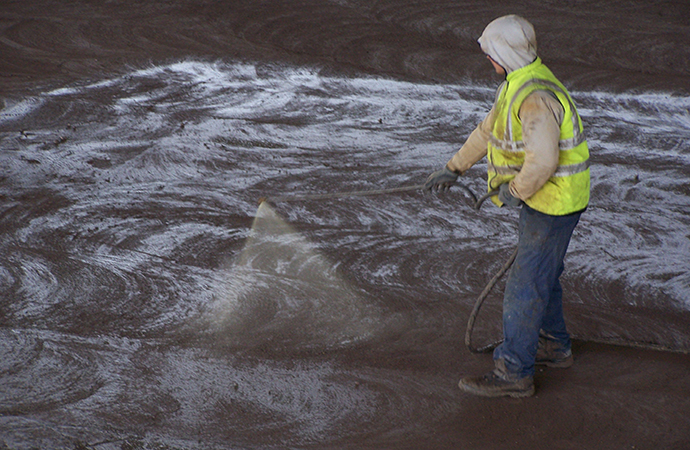There are numerous causes of cracking in concrete, both structural and aesthetic. The occurrence of cracking as a result of structural defects, loading or corrosion is usually prevented by adequate design and correct concrete specification. Non-structural cracking is invariably as a result of site conditions and practices during the early life of the concrete.
The main types of non-structural cracking include plastic settlement, plastic and drying shrinkage, crazing, and early thermal contraction.
Thermal effects are normally only evident in very thick sections and are caused by the rapid cooling of the surface of the concrete. They are best prevented by careful design, use of pozzolanic cement replacements and possibly insulating the concrete surface.
Plastic cracking is characterised by the timing, typically occurring within the first hours of placing the concrete. Plastic settlement cracks usually follow the pattern of reinforcement and are a result of excess bleeding of the concrete, whereas plastic shrinkage cracks tend to be random or at 45° to the edge of the slab and are a result of rapid early drying. The inclusion of polypropylene micro-fibres and minimising the added water reduces settlement cracking. Plastic shrinkage cracking is also greatly reduced by adequate curing of the concrete as early as possible.
Crazing can be similar in appearance to plastic shrinkage cracking but usually appears after a few days. It is caused by very low water/cement on the surface of the concrete (from over-trowelling or too rich a mix) combined with rapid drying conditions. The cracks are usually much shallower than plastic cracking but more widespread. Adequate curing and correct finishing reduce the occurrence.
Drying shrinkage is invariably blamed for many non-structural cracks; however, drying shrinkage cracks are not typically evident until the concrete is several weeks or months old. As concrete dries out there is a resulting reduction in volume or shrinkage. If there is not sufficient provision of joints in a reinforced slab, cracking will occur. By reducing the initial water content, using shrinkage-reducing admixtures and ensuing adequate curing, the rate of drying shrinkage will be reduced, and consequently the incidence of cracking.
Assuming concrete is designed and installed correctly, by far the best way to help reduce cracking is to ensure it is adequately cured. Curing reduces the rate of moisture loss from the surface of the concrete, which in turn reduces the incidence of many types of cracking. By preventing the concrete from drying out too quickly, its strength, durability and abrasion resistance are maximised.
It is also important to realise that curing is as important in the winter as it is in the summer. A mild, but windy winter’s day can cause a higher evaporation rate than a still, humid summer’s day. Likewise, for internal slabs, wind blowing through unfinished doorways or windows can cause localised issues.
Curing can be achieved by covering with polythene or damp hessian; misting or ponding with water; or the application of curing membranes. Curing membranes are liquids applied to the surface as soon as the bleed water has evaporated or the formwork has been stripped to reduce the evaporation. Spray application of curing membranes is one of the simplest, most reliable and cheapest options to correctly cure concrete.
Larsen can provide three curing membranes, each with its own advantages – Acraseal, Larcure 45 and Larcure 90.
For more information, contact Johnny Mooney or Andrew Duffy on 028 9077 4000 or visit www.larsenbuildingproducts.com








